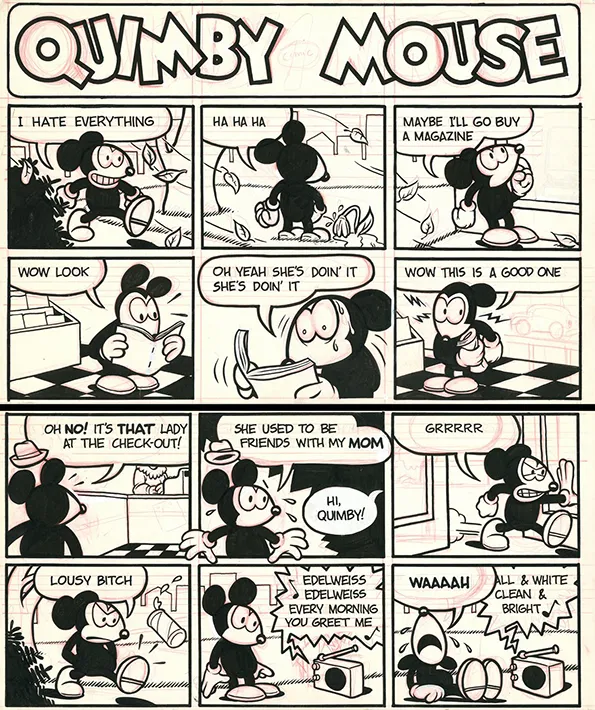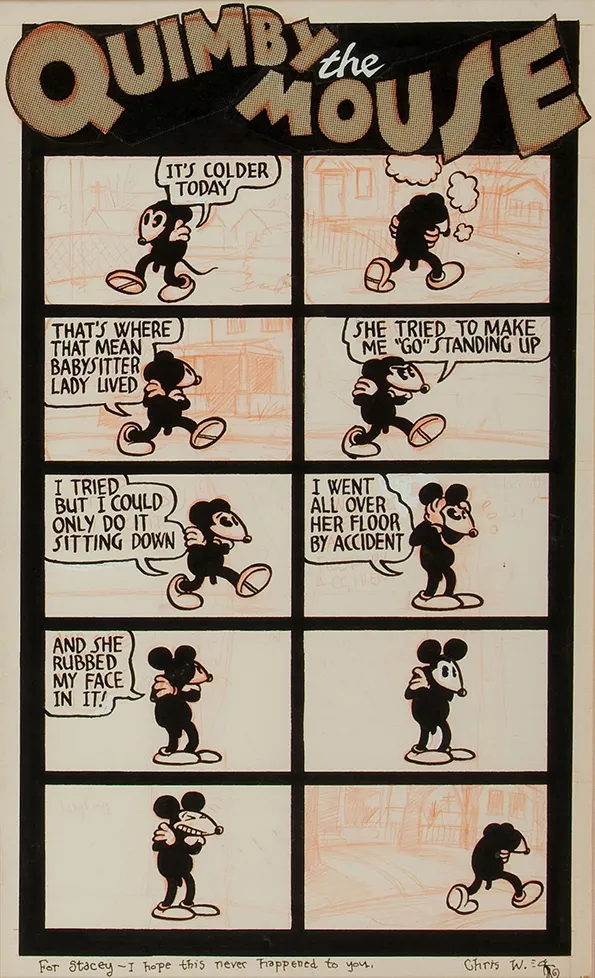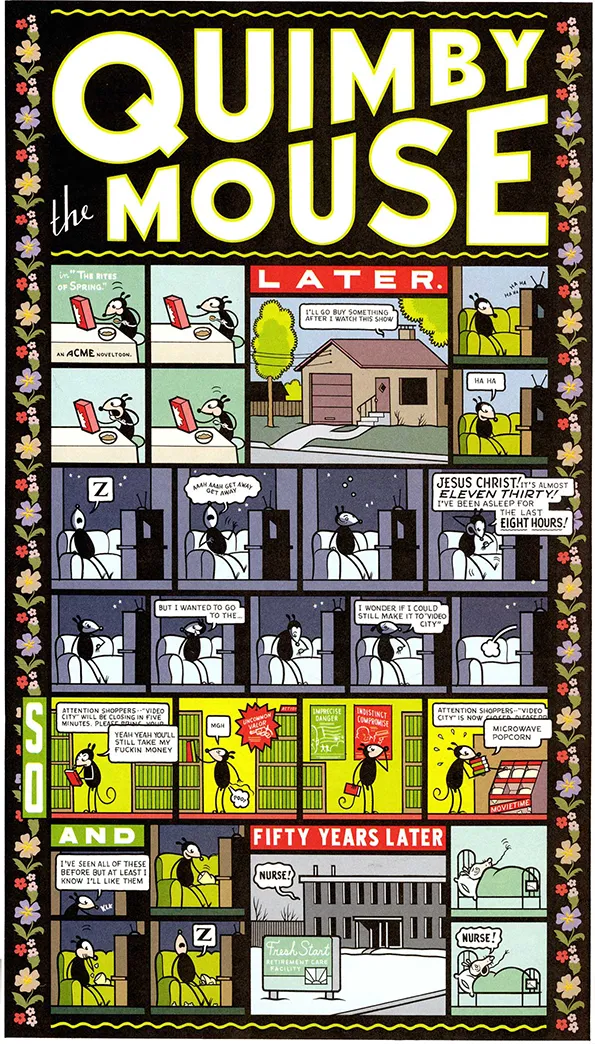Quimby

One in a series of posts dedicated to pop-culture depictions of mice — as symbolic representations of abject other, rebellious scamp, intrepid explorer, scrappy survivor, resourceful collaborator, and habitat experimenter — from 1904–2003.
Before he gave us such immortal, tragicomic characters Jimmy Corrigan and Rusty Brown, the cartoonist Chris Ware gave us Quimby the Mouse — a Mickey Mouse (and Felix the Cat) homage/parody.
While attending the University of Texas at Austin from 1990-1991, Ware experimented with “cartoon faces created more or less by drawing Mickey Mouse without ears,” he has recalled, and created a “strip about a lone pale character lost in a landscape of nostalgia.” Alas, Ware’s earless mouse character looked too much liked a minstrel; the strip was pulled from The Daily Texan.
While still a sophomore at UT, Ware came to the attention of Art Spiegelman, who invited Ware to contribute to the last two issues (1990’s “Required Reading for the Post-Literate” and 1991’s “High Culture for Lowbrows”) of Raw, the influential anthology magazine that Spiegelman was co-editing with Françoise Mouly. Ware resuscitated his Mickey-ish mouse for Raw — which is where we first meet Quimby.

Quimby’s relationship with a disembodied cat head, Sparky, is sometimes loving, sometimes volatile; theirs is a reflection of all human relationships. Quimby’s nostalgic reminiscing about his youth, particularly his relationship with his grandmother, are the author’s own memories; and when Quimby sometimes appears with an old, withered extra mouse head growing from his neck, that’s the artist too — an old soul at war with his youthful body.
Ware’s own Fantagraphics comic book series The ACME Novelty Library followed, in 1993. In 1994, writing for the Minneapolis City Pages, I named Chris Ware “Artist of the Year.”

At the level of form, the strips are wildly inventive and genre-defying; they rarely proceed in any kind of left-to-right, top-to-bottom linear fashion, and even when they do they jump around in time and/or phase in and out of different levels of perception. Ware has cited Joseph Cornell’s surrealist assemblages — found objects arranged into quasi-narrative dioramas or tableaux — as an inspiration.
Despite being nihilistic vehicles of the author’s angst and self-recrimination, Quimby’s adventures can also be — like Mickey’s — amusing and even optimistic. Quimby is large, he contains multitudes.

